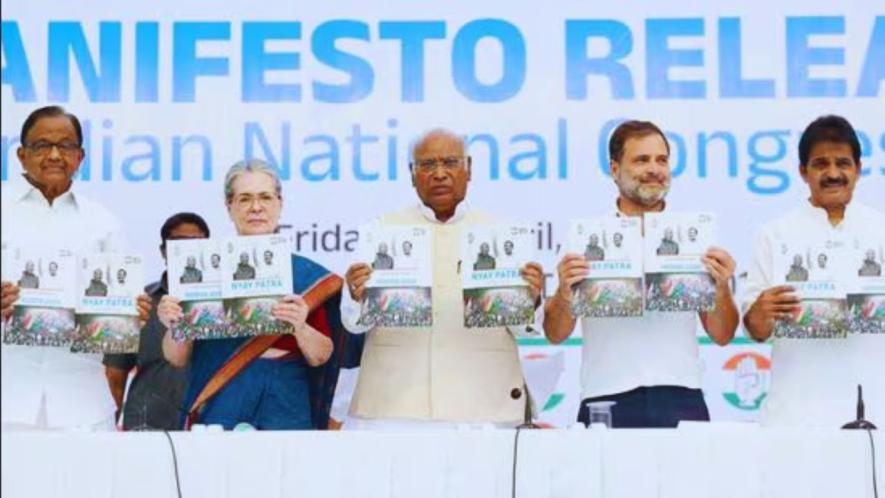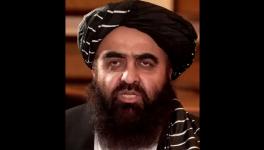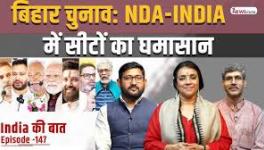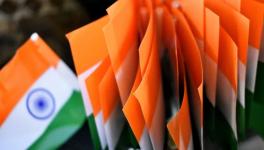Does Congress Manifesto Reflect Muslim League Thinking?

Congress on Friday released its manifesto for the 2024 Lok Sabha elections. Image Courtesy: Twitter/@INCIndia
Last week (April 4, 2024) Indian National Congress released its manifesto, called Nyay Patra (Promise for Justice), for 2024 General Elections. It prominently talked of caste census, raising the cap of 50% on reservations, jobs for youth, internship, and economic support for the poor among others.
Its focus has been on justice for women, adivasis, Dalit-OBCs, farmers, and student-youth. One of its spokespersons stated that the manifesto addresses the steps needed to undo the injustices heaped on different sections of society during the last 10 years of Bharatiya Janata Party (BJP) rule.
Narendra Modi criticised this manifesto by saying that it has the divisive imprint of Muslim League of yore and the remaining part has been filled by the Left ideology. One was immediately reminded of the fountainhead of Hindu nationalist ideology, Rashtriya Swayamsevak Sangh’s, second sarsanghchalak, M.S. Golwalkar, who in his ‘Bunch of Thoughts’ articulates that Hindu nation has three internal threats, Muslims, Christians and communists. The two of these threats have been invoked by BJP at various levels and are being reiterated now. In a way it is a sort of communal dog whistle, the main weapon of BJP.
The Muslim League manifesto and programme for 1937 Assembly elections revolved around Muslim identity demands and never talked of affirmative action for the weak. Its programmes were parallel and opposite of what Hindu nationalists have been pursuing.
Mallikarjun Kharge, the Congress president, in response to BJP’s allegations correctly brought out the collaboration of BJP’s ancestors-leaders with Muslim League.
What is the truth?
As such these ‘Religious Nationalists, Muslim League and Hindu Mahasabha-RSS share a lot in common. Their origin is the declining sections of society in the light of changes which took place in colonial India. As industrialisation, modern education-judiciary-administration and communication came up the new social classes started emerging, the working classes, modern educated classes and modern industrialists. The old rulers, landlords and Raja-Nawabs, started feeling threatened as their social- political-economic hegemony was declining.
From the rising classes emerged the organisations of workers led by Narayan Meghaji Lokhande and Com Singarvelu and many more. The political expression of different emerging groups gave rise to the Indian National Congress among others. Their basic values were a nascent form of ‘Liberty, Equality and Fraternity’.
From the declining classes of landlords-kings first came the United India Patriotic Association, which pledged its loyalty to the British. Their core ideology was hierarchy of caste and gender. In due course this organisation split, Muslim League in 1906 and Hindu Mahasabha in 1915.
In 1923, VD Savarkar in his book ‘Essentials of Hindutva’ articulated that there are two nations in this country, Hindu nation and Muslim Nation. Taking off from this, the RSS came up with the agenda of Hindu Rashtra In 1925. Some pro- Muslim League followers studying in London came up with the word Pakistan.
The common thread of both these streams was that they looked at the rule of Hindu kings or Muslim kings as the glorious, golden period. They supported the British all through against the national movement for Independence. Their strategy was to ally with the British to counter the Hindu or Muslims as the case may be.
Savarkar, the main ideologue of Hindu nationalism in 19th session of the Hindu Mahasabha in Ahmedabad said, “India cannot be assumed today to be a Unitarian and homogenous nation, but on the contrary there are two nations in the main: the Hindus and the Moslems, in India.”
Based on the “two Nation theory”, M A Jinnah demanded separate Muslim Nation Pakistan in 1940 in Muslim League’s Lahore convention.
The RSS unofficial mouthpiece, Organiser, on August 14, wrote, “...that in Hindustan only the Hindus form the nation and the national structure must be built on that safe and sound foundation…the nation itself must be built up of Hindus, on Hindu traditions, culture, ideas and aspirations.”
The Muslim League and Hindu Mahasabha formed joint ministries in Bengal, Sindh and NWFP in 1939. It was in Sind that the Muslims League passed the Pakistan resolution in the Assembly as Hindu Mahasabha members kept silent. Later Subhash Chandra Bose, in a broadcast from Germany, appealed to both Muslim League and Hindu Mahasabha to join the anti-British movement. These organisations and RSS kept aloof from the massive 1942 movement.
Savarkar supported the British in their war efforts in a very active way. “… every branch of the Hindu Mahasabha in every town and village must actively engage itself in rousing the Hindu people to join the [British] army, navy, the aerial forces and the different war-craft manufactories [sic].” As Subhash Bose’s Azad Hind Fauj was fighting against the British Army, Savarkar was helping the British army.
One can clearly see that both Hindu Mahasabha and Muslim League acted in the interests of the British. Subhash Chandra Bose was very much against the communal politics of both these organisations. His appeal of joining the struggle against the British was totally ignored by both these organisations.
Syama Prasad Mookerjee, as part of joint ministry with Muslim League in Bengal, wrote to the British Viceroy to control the 1942 movement, promising him that in Bengal he will ensure that the movement is suppressed there.
In a letter dated July 26, 1942, Mookerjee wrote “Let me now refer to the situation that may be created in the province as a result of any widespread movement launched by the Congress. Anybody, who during the war, plans to stir up mass feeling, resulting internal disturbances or insecurity, must be resisted by any Government that may function for the time being”
As Subhash Chandra Bose categorised both these ideologies of Muslim nationalism and Hindu nationalism in the same group, similar was the analysis of Bhimrao Babasaheb Ambedkar. In his book, Pakistan or Partition of India, 1940, he writes: “Strange as it may appear, Mr. Savarkar and Mr. Jinnah instead of being opposed to each other on the one nation versus two nations issue are in complete agreement about it. Both agree, not only agree but insist, that there are two nations in India — one the Muslim nation and the other the Hindu nation.”
No wonder any commitment for the downtrodden has to be condemned by BJP-RSS, as that goes against the agenda of Hindu Rashtra. We can see the fate of deprived sections in Pakistan, which came up as a Muslim Nation. Modi’s criticism of this hope-giving manifesto is in tune with what his ideological forefathers were saying.
The writer is a human rights activist. The views are personal.
Get the latest reports & analysis with people's perspective on Protests, movements & deep analytical videos, discussions of the current affairs in your Telegram app. Subscribe to NewsClick's Telegram channel & get Real-Time updates on stories, as they get published on our website.
























